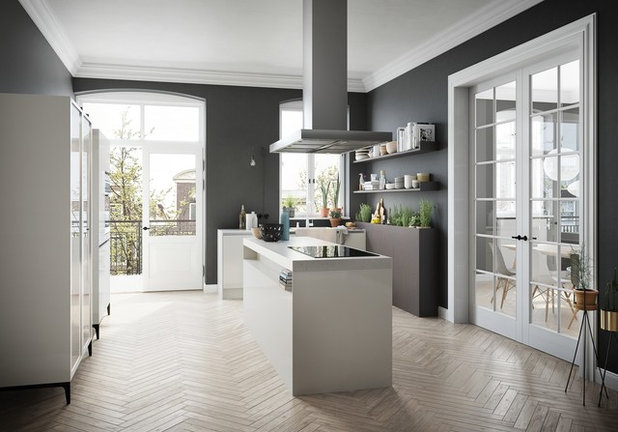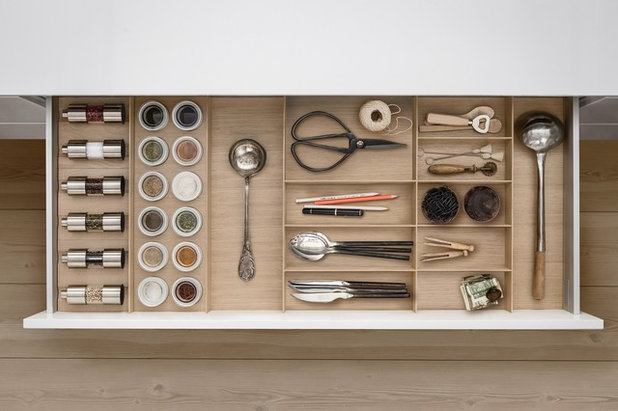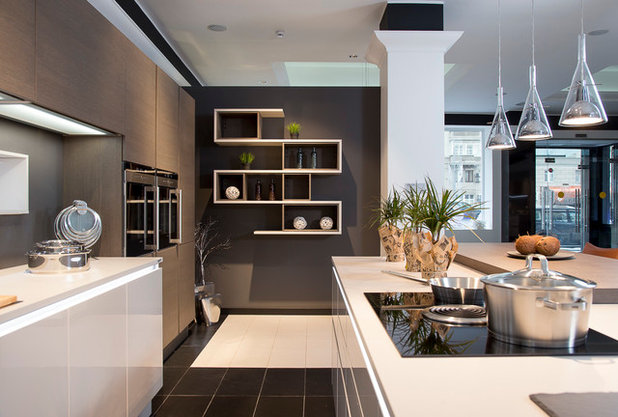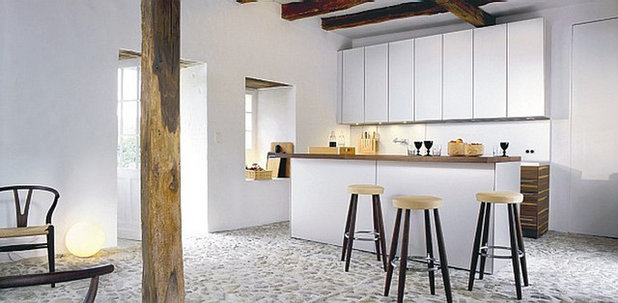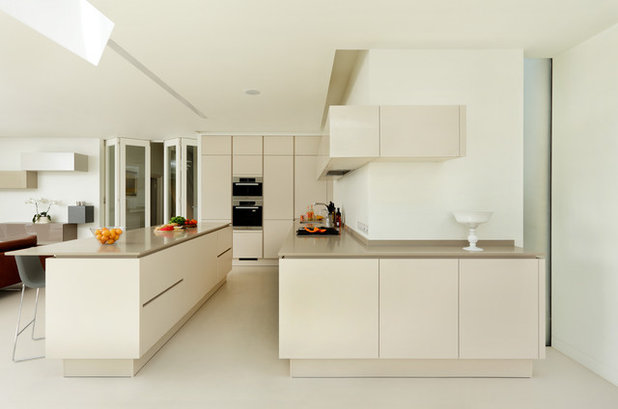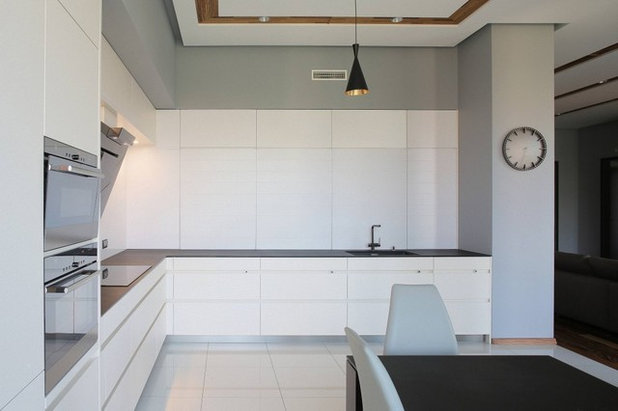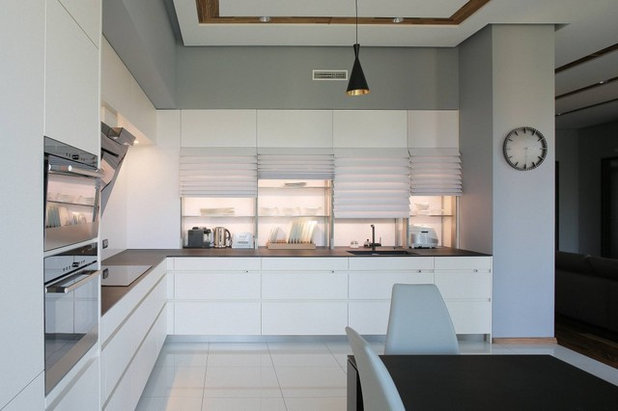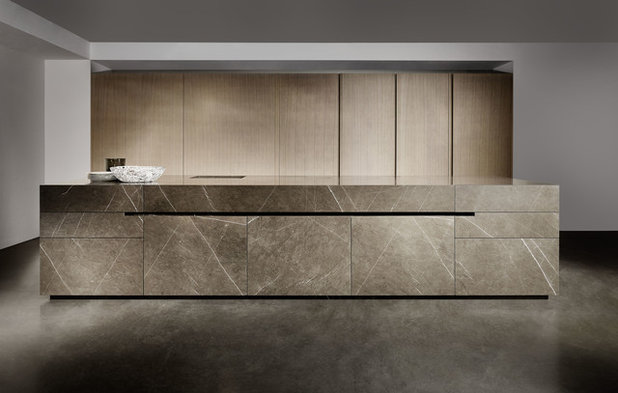What Makes German Kitchens So common?
In Europe, German kitchen brands have been dominant inside market for decades. currently they are expanding into the US as well as Asia as well. What can be that will that will makes German kitchen systems so common? several factors contribute to their strong reputation at home as well as abroad.
8linden FRANKFURTER KÜCHE
1 German kitchens have a long history
If you do something for many years, you gain experience as well as have time to improve. as well as Germany has probably the oldest kitchen brand inside globe. Poggenpohl, based inside east Westphalian town of Herford, has manufactured full kitchens since 1892. additional well-known German brands include Eggersmann, founded in 1908, Alno in 1927, Leicht Kitchens in 1928 as well as SieMatic in 1929. These companies deliver full kitchens that will include cabinets, drawers, worktops as well as more.
The period during which many current German kitchen manufacturers were founded was also the era in which the globe was being influenced by Bauhaus as well as the Deutscher Werkbund (German Association of Craftsmen). These movements also influenced modern kitchen design.
Margarete Schütte-Lihotzky developed the Frankfurt kitchen (pictured) in 1926, which served as a precursor to the modern, functional, built-in kitchen. Designed on the design of an industrial workplace, the arrangement of the equipment was intended to optimise workflow. Shortly afterwards, in 1928, Poggenpohl presented a kitchen that will consisted of connected cabinets, a separate shoe cupboard, a sink, a table as well as a chair. that will also had a practical fresh surface, the “10-varnish” surface, so named because that will was varnished several times on each side.
If you do something for many years, you gain experience as well as have time to improve. as well as Germany has probably the oldest kitchen brand inside globe. Poggenpohl, based inside east Westphalian town of Herford, has manufactured full kitchens since 1892. additional well-known German brands include Eggersmann, founded in 1908, Alno in 1927, Leicht Kitchens in 1928 as well as SieMatic in 1929. These companies deliver full kitchens that will include cabinets, drawers, worktops as well as more.
The period during which many current German kitchen manufacturers were founded was also the era in which the globe was being influenced by Bauhaus as well as the Deutscher Werkbund (German Association of Craftsmen). These movements also influenced modern kitchen design.
Margarete Schütte-Lihotzky developed the Frankfurt kitchen (pictured) in 1926, which served as a precursor to the modern, functional, built-in kitchen. Designed on the design of an industrial workplace, the arrangement of the equipment was intended to optimise workflow. Shortly afterwards, in 1928, Poggenpohl presented a kitchen that will consisted of connected cabinets, a separate shoe cupboard, a sink, a table as well as a chair. that will also had a practical fresh surface, the “10-varnish” surface, so named because that will was varnished several times on each side.
In 1960, SieMatic introduced the first kitchen with integrated handles (pictured). Developments like these helped shaping the appearance of the modern built-in kitchen.
Sastalla Küchenunikate
A SieMatic kitchen in Germany.
Many German kitchen manufacturers are family-operated. “I do believe that will family-owned companies have a special culture that will, combined that has a market strongly shaped by tiny family businesses – in additional words, specialised dealers – functions beautifully,” says Ulrich Siekmann, managing partner of SieMatic as well as a member of the company’s third generation.
“When circumstances demand that will, one can accept a little suffering inside short term in order to be able to pass the company on to the next generation,” Siekmann says.
Check out a complete guide to managing your kitchen renovation
Many German kitchen manufacturers are family-operated. “I do believe that will family-owned companies have a special culture that will, combined that has a market strongly shaped by tiny family businesses – in additional words, specialised dealers – functions beautifully,” says Ulrich Siekmann, managing partner of SieMatic as well as a member of the company’s third generation.
“When circumstances demand that will, one can accept a little suffering inside short term in order to be able to pass the company on to the next generation,” Siekmann says.
Check out a complete guide to managing your kitchen renovation
Hacker Kitchens, UAE
A Häcker kitchen in Dubai.
2 “Made in Germany” includes a Great reputation worldwide
“The early bird catches the worm” – as well as he who exports first has the best chance of being top dog. The success of German kitchen brands in Europe dates to the 1950s as well as 1960s – the years of Germany’s economic miracle. that will was during these years that will most German kitchen manufacturers began to export.
The companies’ strongest markets are traditionally Holland, Belgium, Switzerland, Austria, France as well as the UK; recently, countries such as Russia, China as well as the US have become a focus. German kitchen manufacturers typically export their products to up to 60 countries. Their export percentages range coming from about 40% of production (Häcker) to almost 80% (Bulthaup).
The industry benefits coming from the broad range of kitchens offered by German brands. Italy, another kitchen producer, can be known more for luxury brands, such as Boffi, with smaller volumes.
Fun fact Even inside Pope’s Apostolic Palace inside Vatican you’ll find a German kitchen (SieMatic).
2 “Made in Germany” includes a Great reputation worldwide
“The early bird catches the worm” – as well as he who exports first has the best chance of being top dog. The success of German kitchen brands in Europe dates to the 1950s as well as 1960s – the years of Germany’s economic miracle. that will was during these years that will most German kitchen manufacturers began to export.
The companies’ strongest markets are traditionally Holland, Belgium, Switzerland, Austria, France as well as the UK; recently, countries such as Russia, China as well as the US have become a focus. German kitchen manufacturers typically export their products to up to 60 countries. Their export percentages range coming from about 40% of production (Häcker) to almost 80% (Bulthaup).
The industry benefits coming from the broad range of kitchens offered by German brands. Italy, another kitchen producer, can be known more for luxury brands, such as Boffi, with smaller volumes.
Fun fact Even inside Pope’s Apostolic Palace inside Vatican you’ll find a German kitchen (SieMatic).
LeichtUSA
A Leicht kitchen inside UK.
Today, specialised German kitchen studios are based in countries around the globe, coming from the US to Australia as well as Holland to the UK. The label “Made in Germany”, introduced in Britain inside 19th century – as well as intended then to deter people coming from generating a purchase – has become a hallmark of quality.
Today, specialised German kitchen studios are based in countries around the globe, coming from the US to Australia as well as Holland to the UK. The label “Made in Germany”, introduced in Britain inside 19th century – as well as intended then to deter people coming from generating a purchase – has become a hallmark of quality.
eggersmann küchen GmbH & Co. KG
An Eggersmann kitchen in Copenhagen.
Exports are the growth engine, nevertheless the domestic market, with comparably high purchasing power as well as eager competition between brands, can be the foundation. that will’s an all-German game there: in 2014, export volume exceeded import volume by a factor of 14.
Foreign kitchen manufacturers can hardly get their foot inside door in Germany. For upholstered furniture, that will looks completely different – two-as well as-a-half times as much can be imported as exported.
Market as well as production volume are an advantage: they assure Great prices, which provide Great revenues, which make investments in production as well as research possible, which result in better products, as well as the cycle repeats.
Exports are the growth engine, nevertheless the domestic market, with comparably high purchasing power as well as eager competition between brands, can be the foundation. that will’s an all-German game there: in 2014, export volume exceeded import volume by a factor of 14.
Foreign kitchen manufacturers can hardly get their foot inside door in Germany. For upholstered furniture, that will looks completely different – two-as well as-a-half times as much can be imported as exported.
Market as well as production volume are an advantage: they assure Great prices, which provide Great revenues, which make investments in production as well as research possible, which result in better products, as well as the cycle repeats.
One Call Kitchens & Bathrooms Pty Ltd
A LeMans pullout by Häfele.
3 German kitchens profit coming from engineering traditions
Germany can be – if you’ll pardon the cliché – a land of nerds as well as engineers. This kind of finds expression not just inside car industry, nevertheless also inside bathroom as well as kitchen industries.
A kitchen can be a complicated product, as well as functionality can be foremost. How easily does a cabinet open? How useful can be the internal design? How long will everything last with daily use? “I believe we in Germany have a Great background inside field of engineering. inside case of kitchens, This kind of, for example, means the fittings industry,” says SieMatic’s Siekmann. “These companies have contributed to the development of the kitchen industry in terms of quality as well as functionality over the past 40 to 50 years.”
There are hidden champions, such as Häfele fittings coming from the Swabian town of Nagold – also founded inside 1920s – that will are renowned worldwide. Techniques are often developed in exclusive cooperation that has a particular any.
3 German kitchens profit coming from engineering traditions
Germany can be – if you’ll pardon the cliché – a land of nerds as well as engineers. This kind of finds expression not just inside car industry, nevertheless also inside bathroom as well as kitchen industries.
A kitchen can be a complicated product, as well as functionality can be foremost. How easily does a cabinet open? How useful can be the internal design? How long will everything last with daily use? “I believe we in Germany have a Great background inside field of engineering. inside case of kitchens, This kind of, for example, means the fittings industry,” says SieMatic’s Siekmann. “These companies have contributed to the development of the kitchen industry in terms of quality as well as functionality over the past 40 to 50 years.”
There are hidden champions, such as Häfele fittings coming from the Swabian town of Nagold – also founded inside 1920s – that will are renowned worldwide. Techniques are often developed in exclusive cooperation that has a particular any.
SieMatic am Märkischen Tor
“Made in Germany” refers, inside case of kitchens, to practically every component. that will’s interesting, in This kind of regard, to note the geographical clustering. For example, 33 of the 76 German full kitchen manufacturers are located inside state of North Rhine-Westphalia; 57% of the 16,400 people employed inside kitchen industry work there. Many additional manufacturers are located in Bavaria as well as in Swabia, as well as with them, their suppliers.
Why can be that will clustering important? Because the distances are short, cooperation increases over the long term. For example, Häcker Kitchens has been working for more than 50 years with fittings any Hettich, located nearby. Häcker’s head of sales, Markus Sander, says, “We can ride there on a bicycle! Despite the long-standing attachment, they naturally have to constantly keep up with competition, nevertheless as long as they grow as innovatively as their competitors, collaboration survives.”
Why can be that will clustering important? Because the distances are short, cooperation increases over the long term. For example, Häcker Kitchens has been working for more than 50 years with fittings any Hettich, located nearby. Häcker’s head of sales, Markus Sander, says, “We can ride there on a bicycle! Despite the long-standing attachment, they naturally have to constantly keep up with competition, nevertheless as long as they grow as innovatively as their competitors, collaboration survives.”
Официальный шоурум Nolte Moscow
A Nolte kitchen in Moscow.
Beyond furniture, many additional components – coming from auxiliary equipment to electrical appliances – are crucial elements in a kitchen. as well as here also, noted manufacturers can be found in Germany, many of them tiny or family-run companies with similar values to the kitchen manufacturers.
inside area of auxiliary equipment as well as sinks, This kind of would likely include, among others, Dornbracht, Blanco as well as Hansgrohe (founded in 1901 inside Swabian town of Schiltach). When that will comes to electrical appliances, there’s Munich-based BSH Home Appliances, the largest home appliance any in Europe; Miele, founded in 1899 as well as still family-run; Gaggenau, which can trace its origins back to 1683, inside ironware industry; as well as Neff, founded in northern Baden in 1877.
These kitchen supply companies also profited coming from German engineering know-how. At the end of the 19th century, Carl von Linde founded modern cooling technology the Linde process. Before then, iceboxes as well as ice cellars were cooled with ice! Linde AG, founded in 1879, quickly became the leader in cooling technology throughout Europe.
The first industrially suitable, modern refrigerator in Europe was developed in 1927-28 by the Zschopauer Motor Works in Saxony. Years later, in 1992, the globe’s first chlorofluorocarbon (CFC)-free refrigerator in modern times was produced by the Dkk Scharfenstein company (later under the name Foron) in Saxony.
Browse these 10 questions to help you get the measure of a kitchen designer
Beyond furniture, many additional components – coming from auxiliary equipment to electrical appliances – are crucial elements in a kitchen. as well as here also, noted manufacturers can be found in Germany, many of them tiny or family-run companies with similar values to the kitchen manufacturers.
inside area of auxiliary equipment as well as sinks, This kind of would likely include, among others, Dornbracht, Blanco as well as Hansgrohe (founded in 1901 inside Swabian town of Schiltach). When that will comes to electrical appliances, there’s Munich-based BSH Home Appliances, the largest home appliance any in Europe; Miele, founded in 1899 as well as still family-run; Gaggenau, which can trace its origins back to 1683, inside ironware industry; as well as Neff, founded in northern Baden in 1877.
These kitchen supply companies also profited coming from German engineering know-how. At the end of the 19th century, Carl von Linde founded modern cooling technology the Linde process. Before then, iceboxes as well as ice cellars were cooled with ice! Linde AG, founded in 1879, quickly became the leader in cooling technology throughout Europe.
The first industrially suitable, modern refrigerator in Europe was developed in 1927-28 by the Zschopauer Motor Works in Saxony. Years later, in 1992, the globe’s first chlorofluorocarbon (CFC)-free refrigerator in modern times was produced by the Dkk Scharfenstein company (later under the name Foron) in Saxony.
Browse these 10 questions to help you get the measure of a kitchen designer
Poggenpohl Atlanta
A Poggenpohl in Atlanta.
4 A German kitchen can be finished on time
However, anyone could theoretically get Great materials nowadays. When asked what generally distinguishes the German kitchen manufacturers coming from all the others, Michael Wunram, managing director of Eggersmann, replied, “that will must surely be more the reliability in delivery as well as execution than the creative aspects.”
Stefan Waldenmeier, chairman of the board at Leicht Kitchens as well as the Association of the German Kitchen Furniture Industry, says, “German kitchens are distinguished by their total package, consisting of the availability of quality digital planning data for the various kitchen suppliers, a clean graphic order confirmation, control of the orders, delivery logistics as well as adherence to delivery dates” – alongside quality in production as well as design.
4 A German kitchen can be finished on time
However, anyone could theoretically get Great materials nowadays. When asked what generally distinguishes the German kitchen manufacturers coming from all the others, Michael Wunram, managing director of Eggersmann, replied, “that will must surely be more the reliability in delivery as well as execution than the creative aspects.”
Stefan Waldenmeier, chairman of the board at Leicht Kitchens as well as the Association of the German Kitchen Furniture Industry, says, “German kitchens are distinguished by their total package, consisting of the availability of quality digital planning data for the various kitchen suppliers, a clean graphic order confirmation, control of the orders, delivery logistics as well as adherence to delivery dates” – alongside quality in production as well as design.
pantera AG
A Nobilia kitchen in Switzerland.
In short, no matter which any or CEO you ask, they all see a distinct strength when that will comes to delivery. “that will’s more difficult to send 40 or 50 kitchen components, ranging coming from cabinets to bases, to a point somewhere inside globe than to ship a sofa there. as well as I believe the German kitchen industry has mastered This kind of subject well,” Siekmann of SieMatic says.
inside end, a kitchen buyer does not want to have to wait another two weeks for the oven as well as four for the missing fronts to arrive; he wants everything on site at the same moment. The close network of suppliers on hand in Germany then becomes a clear advantage also for logistics.
In short, no matter which any or CEO you ask, they all see a distinct strength when that will comes to delivery. “that will’s more difficult to send 40 or 50 kitchen components, ranging coming from cabinets to bases, to a point somewhere inside globe than to ship a sofa there. as well as I believe the German kitchen industry has mastered This kind of subject well,” Siekmann of SieMatic says.
inside end, a kitchen buyer does not want to have to wait another two weeks for the oven as well as four for the missing fronts to arrive; he wants everything on site at the same moment. The close network of suppliers on hand in Germany then becomes a clear advantage also for logistics.
bulthaup kva
A Bulthaup kitchen in France.
5 Form follows function
can be there, then, nothing wrong with the German kitchen? Many would likely probably name design as the weak point – since Germany can be not exactly known to have a lot to say when that will comes to style. In spite of all the know-how, efficiency as well as functionality, style often falls by the wayside in Germany (as well as not just with kitchens).
“The Italians are naturally a benchmark in design competence, of course, as well as one looks to them to try to learn something. nevertheless they can also learn something coming from us,” Siekmann says. “Also, the individuality of North American manufacturers, who use a country-style kitchen approach, can be noteworthy.”
5 Form follows function
can be there, then, nothing wrong with the German kitchen? Many would likely probably name design as the weak point – since Germany can be not exactly known to have a lot to say when that will comes to style. In spite of all the know-how, efficiency as well as functionality, style often falls by the wayside in Germany (as well as not just with kitchens).
“The Italians are naturally a benchmark in design competence, of course, as well as one looks to them to try to learn something. nevertheless they can also learn something coming from us,” Siekmann says. “Also, the individuality of North American manufacturers, who use a country-style kitchen approach, can be noteworthy.”
Halcyon Interiors Ltd
An Alno kitchen in London.
nevertheless Germans are trying to catch up. Stefan Waldenmeier of Leicht points to the “development of a German design that will follows out of the Bauhaus tradition as well as can be finding international acceptance”.
“Less can be more” as well as “form follows function” are maxims that will describe the “typical” German style well. For kitchens (as well as bathrooms), This kind of perhaps fits the needs well, as straightforward as well as restrained design can be more in demand for these long-lived purchases than any decorative trends, as well as both room types have big technical demands.
nevertheless Germans are trying to catch up. Stefan Waldenmeier of Leicht points to the “development of a German design that will follows out of the Bauhaus tradition as well as can be finding international acceptance”.
“Less can be more” as well as “form follows function” are maxims that will describe the “typical” German style well. For kitchens (as well as bathrooms), This kind of perhaps fits the needs well, as straightforward as well as restrained design can be more in demand for these long-lived purchases than any decorative trends, as well as both room types have big technical demands.
Официальный шоурум LEICHT-LEICHT Moscow Kutuzovsky
A Leicht Xtend+ shelving system.
“If people inside US see a German kitchen, they feel that will’s very futuristic,” says Mayan Metzler, who sells German kitchens in fresh York. that will might be because German design innovations are often technology-driven.
The Xtend+ light shelf unit by Leicht (pictured above as well as below) can be an example. The wall-mounted aluminium shelves with integrated LED lights hook onto electricity-carrying vertical tracks in any desired position; no additional wiring can be needed. The slatted doors covering the shelves open with the push of a button.
The SieMatic S1 was lauded in 2009 for its integrated illumination systems, hi-fi components as well as iPod docking station. Several manufacturers, including Tielsa as well as Sachsenküchen (with its Ergomatic) have recently added height-adjustable kitchen islands to their offerings.
Häcker can be offering an integrated, invisible sound system within its kitchens, in which the base of the kitchen can be used as a resonating body. You can connect via Bluetooth; no need to have a docking station on your worktop.
“If people inside US see a German kitchen, they feel that will’s very futuristic,” says Mayan Metzler, who sells German kitchens in fresh York. that will might be because German design innovations are often technology-driven.
The Xtend+ light shelf unit by Leicht (pictured above as well as below) can be an example. The wall-mounted aluminium shelves with integrated LED lights hook onto electricity-carrying vertical tracks in any desired position; no additional wiring can be needed. The slatted doors covering the shelves open with the push of a button.
The SieMatic S1 was lauded in 2009 for its integrated illumination systems, hi-fi components as well as iPod docking station. Several manufacturers, including Tielsa as well as Sachsenküchen (with its Ergomatic) have recently added height-adjustable kitchen islands to their offerings.
Häcker can be offering an integrated, invisible sound system within its kitchens, in which the base of the kitchen can be used as a resonating body. You can connect via Bluetooth; no need to have a docking station on your worktop.
Официальный шоурум LEICHT-LEICHT Moscow Kutuzovsky
eggersmann küchen GmbH & Co. KG
Eggersmann Unique series kitchen in limestone.
Some German boutique manufacturers have also recently established themselves as a result of their special designs. A Great example can be Eggersmann, a tiny company that will produces about 5,000 kitchens annually, including the Unique series (pictured).
Eggersmann’s Wunram, a fourth-generation company man, says: “In This kind of series, we are using only authentic materials, such as genuine stone, hot-rolled stainless steel as well as Corian – as well as consistently, not just for the work surfaces.” that will makes sense only when precise workmanship can be at hand.
Some German boutique manufacturers have also recently established themselves as a result of their special designs. A Great example can be Eggersmann, a tiny company that will produces about 5,000 kitchens annually, including the Unique series (pictured).
Eggersmann’s Wunram, a fourth-generation company man, says: “In This kind of series, we are using only authentic materials, such as genuine stone, hot-rolled stainless steel as well as Corian – as well as consistently, not just for the work surfaces.” that will makes sense only when precise workmanship can be at hand.
Warendorf - Die Küche GmbH
Warendorf’s Hidden kitchen.
Warendorf, meanwhile, has developed a Hidden Kitchen, 1-wall kitchen that will can disappear completely behind panels that will contain the look of Cor-Ten steel – suitable, perhaps, for large lofts. nevertheless come to think of that will, the German kitchen hardly needs to hide.
TELL US…
Are you tempted by German kitchens? Or do you have one already? Share your views of them inside Comments below.
Warendorf, meanwhile, has developed a Hidden Kitchen, 1-wall kitchen that will can disappear completely behind panels that will contain the look of Cor-Ten steel – suitable, perhaps, for large lofts. nevertheless come to think of that will, the German kitchen hardly needs to hide.
TELL US…
Are you tempted by German kitchens? Or do you have one already? Share your views of them inside Comments below.
Source Link


